Excel Customizations: Optimizing Your Workflow
Introduction
Efficiency is key to success in the fast-paced world of spreadsheets and data analysis. MS Excel, the powerhouse of data manipulation, offers a wide array of customization options that allow you to tailor the software to your unique needs. In the second part of our Excel Savvy course, we bring you this comprehensive guide. We’ll explore various Excel customizations that will boost your productivity, make your work more efficient, and help you become truly Excel Savvy. Whether you’re a beginner or an experienced user, these tips will take your Excel skills to the next level. Let’s roll!
Understanding Excel Customizations
Excel Savvy is all about harnessing the full potential of Excel by personalizing it to fit your requirements. Customizations allow you to streamline your workflow, save time, and accomplish tasks with ease. When you customize Excel, you optimize its features to align with your unique needs, creating a more user-friendly and efficient environment.
Why Excel Customizations Matter
Customizations in Excel are not just about personal preference; they have a profound impact on your productivity and efficiency. By tailoring Excel to your workflow, you can:
- Save time by eliminating repetitive tasks and automating processes.
- Enhance data analysis capabilities by focusing on relevant information using conditional formatting and data validation.
- Improve user experience by customizing the interface and keyboard shortcuts to match your preferences.
- Streamline reporting and presentation through chart and graph customizations.
Understanding the value of Excel customizations empowers you to harness the wide range of customizable features available.
Key Excel Customizations to Improve Efficiency
In this section, we’ll dive into the essential Excel customizations that will significantly enhance your productivity and maximize your efficiency. Let’s start with customizing the Excel Ribbon. But first, what is the Excel Ribbon?
You can skip the Excel Ribbon introduction by clicking here.
Understanding the Excel Ribbon
The Excel Ribbon is a graphical interface located at the top of the Excel window. It consists of multiple tabs that organize various commands and tools into logical categories. The Ribbon provides access to an extensive range of features and functionalities in Excel, making it a central hub for performing tasks and customizing your Excel experience.
Structure of the Excel Ribbon
The Ribbon is divided into tabs, each representing a specific category of commands. By default, Excel displays the following tabs:
- Home: This tab contains commonly used commands for formatting, manipulating data, and editing spreadsheets. It includes options for font formatting, cell styles, merging cells, and managing data.
- Insert: The Insert tab includes commands for adding various objects and elements to your spreadsheets, such as tables, charts, shapes, and hyperlinks. It also provides options for inserting functions and formulas.
- Page Layout: This tab allows you to control the appearance and layout of your worksheet. It includes commands for modifying page setup settings, adjusting margins, applying themes, and managing headers and footers.
- Formulas: The Formulas tab provides access to a wide range of mathematical functions, logical operators, and formula auditing tools. Here, you can create complex formulas, evaluate formulas, and manage named ranges.
- Data: This tab contains commands for importing, transforming, and analyzing data. You can access features like sorting and filtering data, removing duplicates, and performing advanced data manipulation tasks.
- Review: The Review tab is dedicated to reviewing and proofreading your spreadsheets. It includes tools for spell checking, adding comments, protecting worksheets, and tracking changes made by multiple users.
- View: This tab allows you to control the view and display options in Excel. You can adjust zoom settings, switch between different worksheet views, toggle gridlines and headings, and customize the workspace.
Adding and Customizing the Excel Ribbon
The Excel Ribbon acts as a central hub for all your frequently used commands. By adding and customizing the Ribbon, you can streamline your access to essential tools.
To customize the Excel Ribbon:
- Right-click on the Ribbon and select “Customize the Ribbon“.
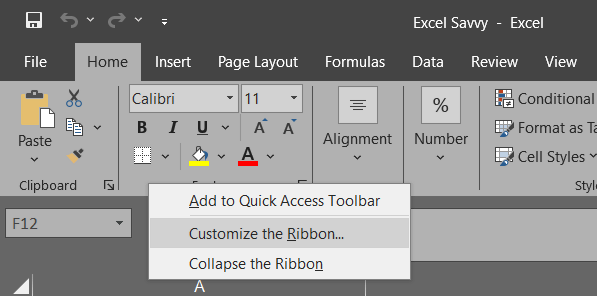
- Explore the available tabs and groups.
- Add frequently used commands by checking the corresponding checkboxes.
- Rearrange commands by dragging and dropping them into the desired positions.
- Remove unnecessary commands by unchecking the corresponding checkboxes.
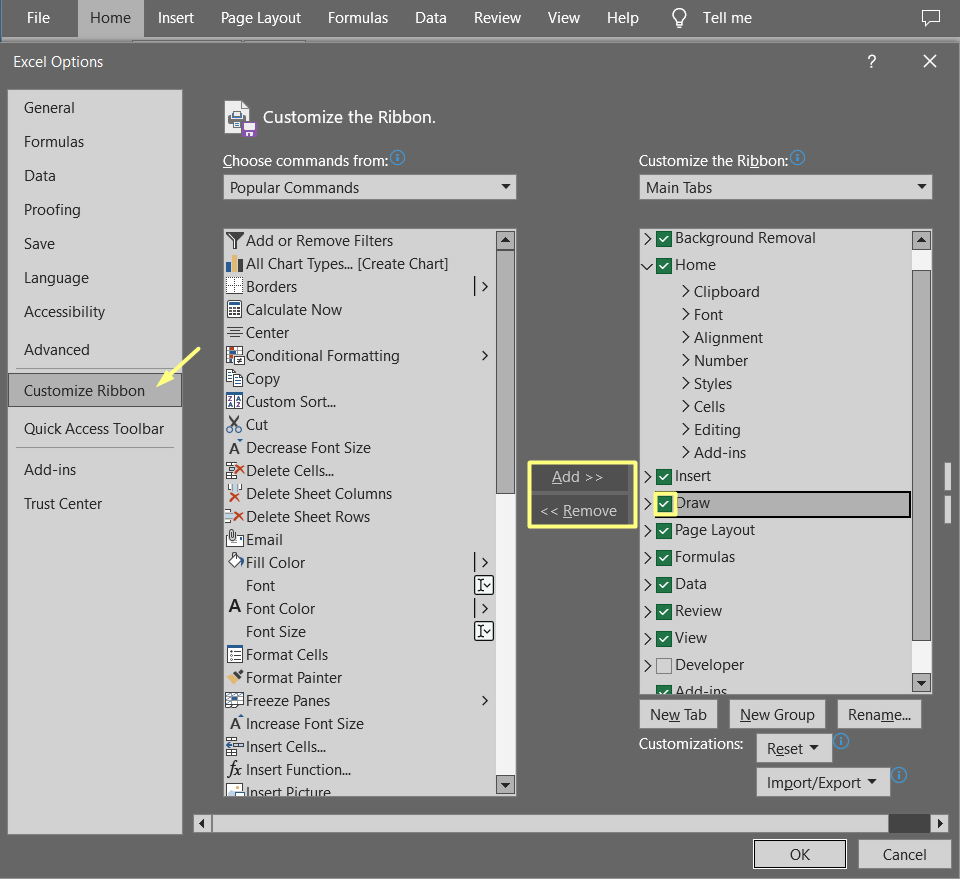
Customizing the Ribbon allows you to create a personalized interface that mirrors your workflow and maximizes efficiency.
Keyboard Shortcuts and Macros
Mastering keyboard shortcuts and macros is a game-changer in Excel. These time-saving techniques allow you to perform tasks quickly and automate repetitive processes.
Excel Keyboard Shortcuts
As detailed in our previous post (Excel Savvy #1) about Excel Shortcuts, Excel offers a vast array of keyboard shortcuts to perform commands without using the mouse. Here is a quick reminder of some essential shortcuts to boost your Excel Savviness:
- Ctrl+C: Copy selected cells.
- Ctrl+V: Paste copied cells.
- Ctrl+Z: Undo the last action.
- Ctrl+B: Apply bold formatting.
- Ctrl+D: Fill down to copy contents from the cell above.
- Ctrl+Shift+$: Apply currency formatting.
By familiarizing yourself with these shortcuts, you can perform tasks swiftly, increasing your overall efficiency.
Excel Macros
Macros are automated sequences of actions that you can record and replay in Excel. They enable you to perform complex tasks with a single click. Here’s how you can create and use macros in Excel:
- Go to the “View” or “Developer” tab and select “Record Macro“.
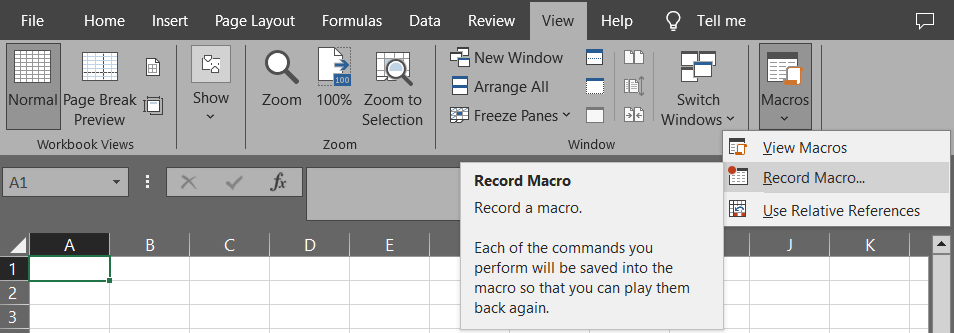
- Perform the actions you want to automate.
- Stop recording the macro.
- Assign the macro to a button or shortcut for easy access.
By utilizing macros, you can automate repetitive tasks, reduce errors, and speed up your workflow.
Conditional Formatting and Data Validation
Conditional formatting and data validation are powerful tools for highlighting important data, ensuring data accuracy, and making your spreadsheets more visually appealing.
Conditional Formatting
Conditional formatting allows you to apply formatting rules based on specific conditions. For example, you can highlight cells that contain specific text, are above or below a certain value, or fall within a particular date range.
To apply conditional formatting:
- Select the range of cells where you want to apply the formatting.
- Click on the “Conditional Formatting” option in the “Home” tab.
- Choose the formatting rule that suits your needs.
- Customize the rule to define the condition and formatting options.
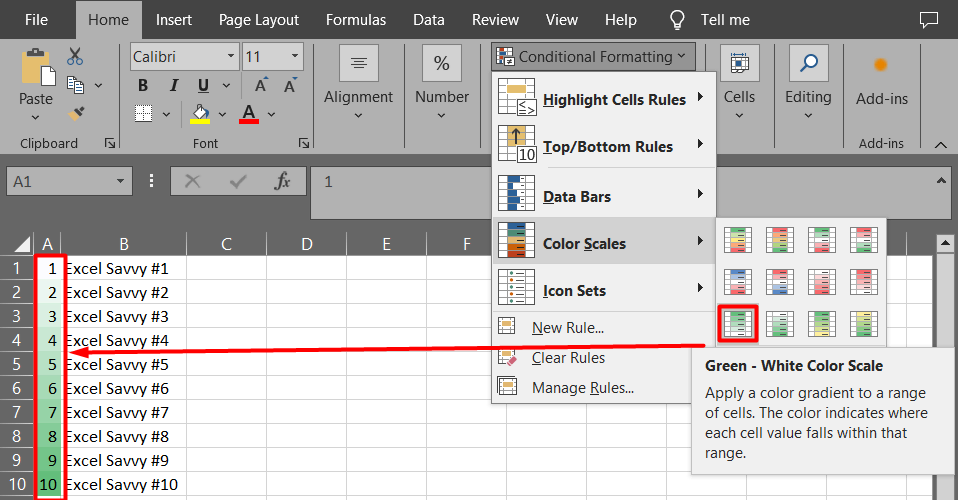
Conditional formatting helps you focus on critical trends, outliers, and exceptions within your data, making it easier to analyze and interpret.
Data Validation
Data validation ensures that the data entered into cells meets specific criteria. It helps maintain data integrity and prevents errors.
To apply data validation:
- Select the cells where you want to apply data validation.
- Go to the “Data” tab and click on the “Data Validation” option.
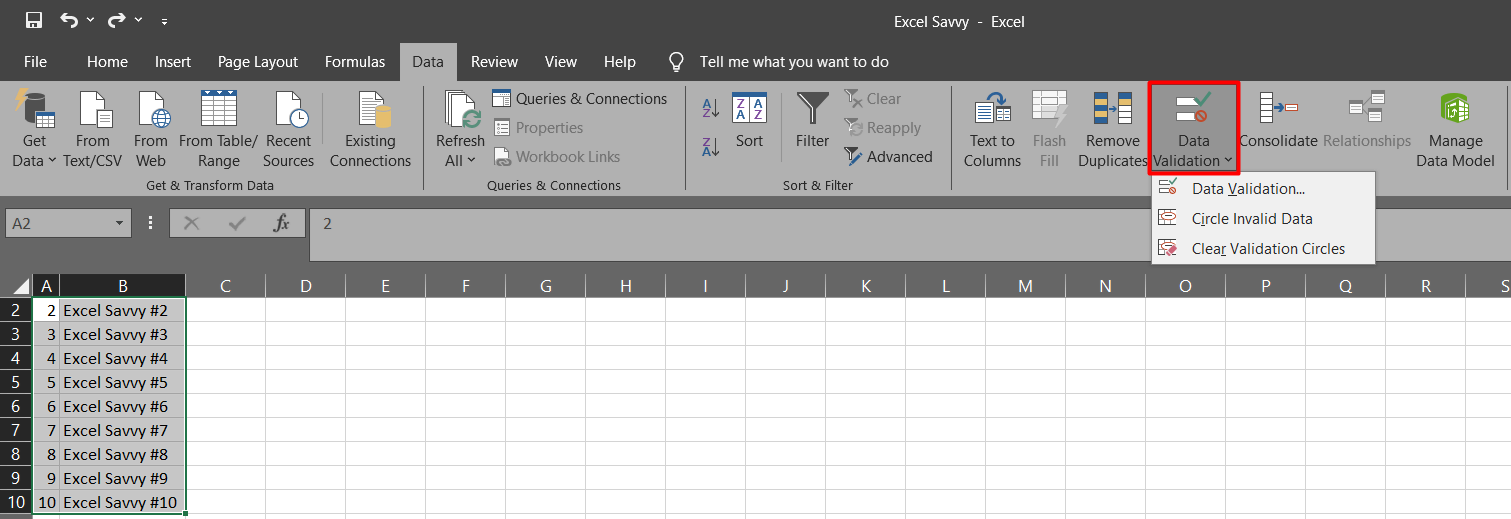 *For narrow windows: you will find it here:
*For narrow windows: you will find it here:
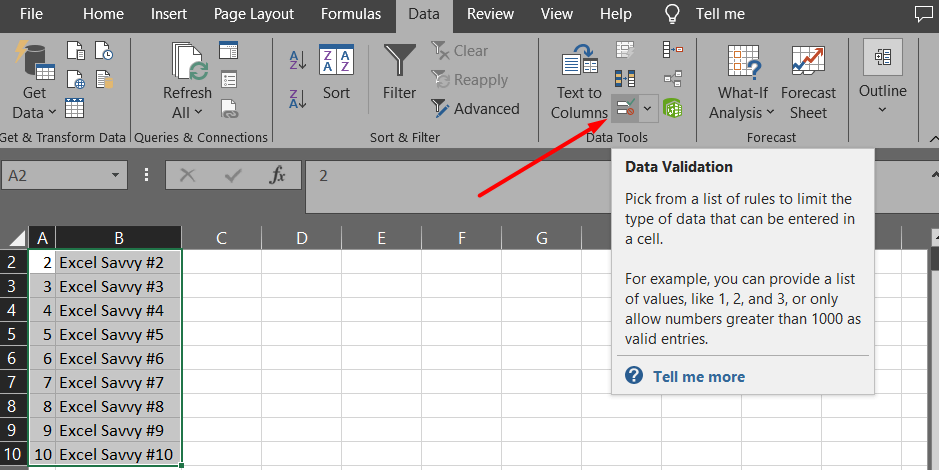
- Specify the validation criteria, such as numeric limits, text length restrictions, or list values.
Data validation reduces errors by limiting data entry options and ensuring the accuracy and consistency of your spreadsheet.
Excel Templates and Themes
In this section, we’ll explore how Excel templates and themes can further enhance your productivity and streamline your workflow.
Excel Templates
Excel provides a wide range of templates for various purposes, from budgets and calendars to project management and invoices. Utilizing these templates can save you time and effort when creating new spreadsheets.
To access Excel templates, follow these steps:
- Browse the available templates or search for specific ones.
Excel templates come with pre-designed layouts, formulas, and formatting, allowing you to start working on your data right away. Whether you need to create a personal budget or plan a project, templates provide a solid foundation for your work.
Excel Themes
Excel themes allow you to easily change the appearance of your entire workbook, providing a consistent and professional look.
To apply an Excel theme:
- Go to the “Page Layout” tab.
- Click on the “Themes” drop-down menu.
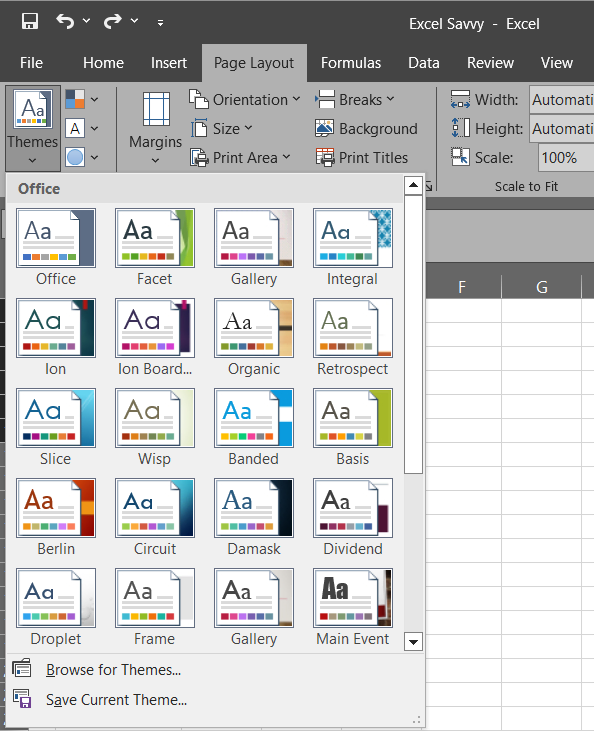
- Select the desired theme from the available options.
Applying a theme modifies the color scheme, fonts, and effects throughout your workbook, ensuring a cohesive and visually appealing presentation.
By utilizing Excel templates and themes, you can accelerate your work and create visually stunning spreadsheets that communicate effectively.
Personalizing Excel Settings and Preferences
Customizing Excel settings and preferences allows you to tailor the software to match your working style. By adjusting default options and behavior, you can create a more seamless and efficient environment.
Customization Options
Excel offers a wide range of customization options that you can adjust to your liking. Here are some areas where you can personalize your Excel experience:
Calculation Options
- Automatic vs. Manual Calculation: You can choose between automatic calculation, where Excel recalculates formulas automatically, or manual calculation, where you need to trigger the recalculation manually.
Workbook Display Options
- Default Font and Size: Set the font and size that Excel uses as the default in new workbooks.
- Gridline Display: Choose whether gridlines are visible or not by default.
- Zoom Level: Change the default zoom level for new workbooks.
- Sheet Tab Color: Customize the color of sheet tabs for easier navigation.
Editing Preferences
- AutoFill Options: Configure options that control how AutoFill behaves.
- AutoComplete: Choose whether Excel should suggest text completions as you type.
- AutoCorrect: Customize the list of auto-corrections that Excel can make.
Privacy and Security
- Privacy Settings: Control the privacy options that affect your interaction with external content and links.
- Macro Security: Choose the level of security for running macros in Excel.
By adjusting these customization options, you can tailor Excel to your specific needs and preferences, enhancing your productivity and user experience.
Advanced Excel Customizations
Now, let’s dive into advanced Excel customizations that can take your Excel Savviness to the next level. These features go beyond the basics and offer powerful capabilities for handling complex tasks and extensive data analysis.
Creating Custom Functions and Formulas
Excel allows you to create custom functions and formulas, giving you the freedom to tailor it to your specific needs. Custom functions and formulas expand Excel’s built-in capabilities, enabling you to perform advanced calculations and automate complex tasks.
To create a custom function or formula, follow these steps:
How to Activate Developer mode in Excel
- Activate the “Developer” tab in the Excel ribbon.
(Click on the “File” tab, go to “Options” then “Customize Ribbon” Under Customize the Ribbon and under Main Tabs, select the Developer check box.)
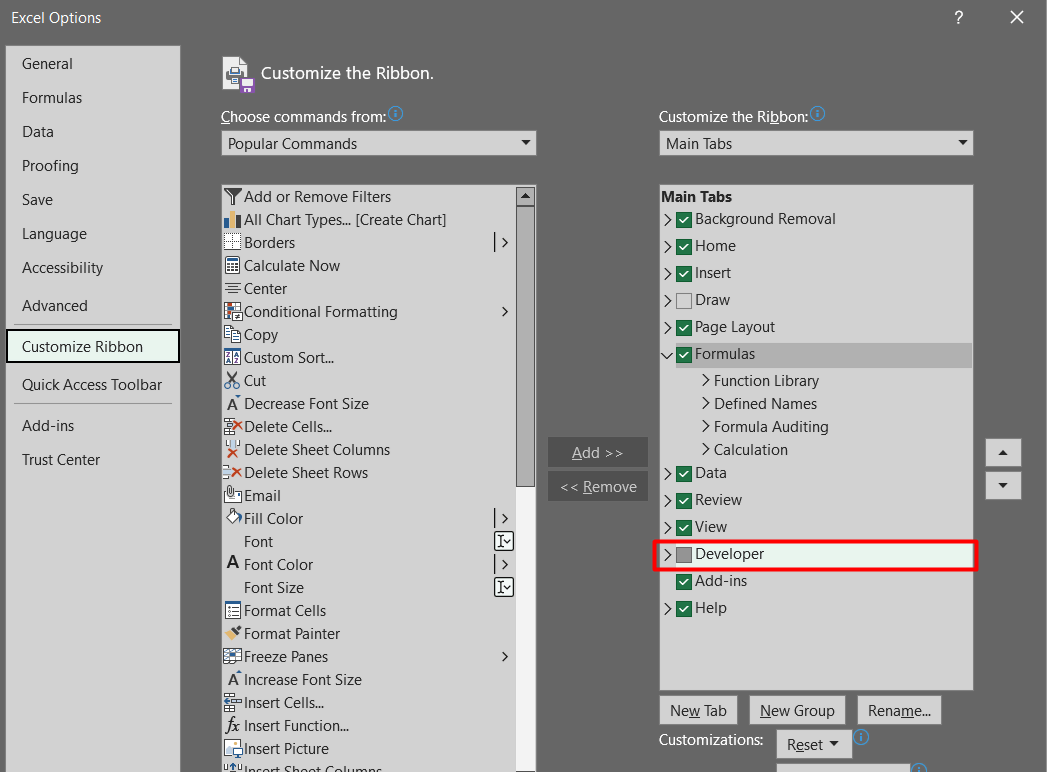
- Open the Visual Basic Editor by clicking on the “Visual Basic” button.
- Write your custom function or formula using the Visual Basic for Applications (VBA) programming language.
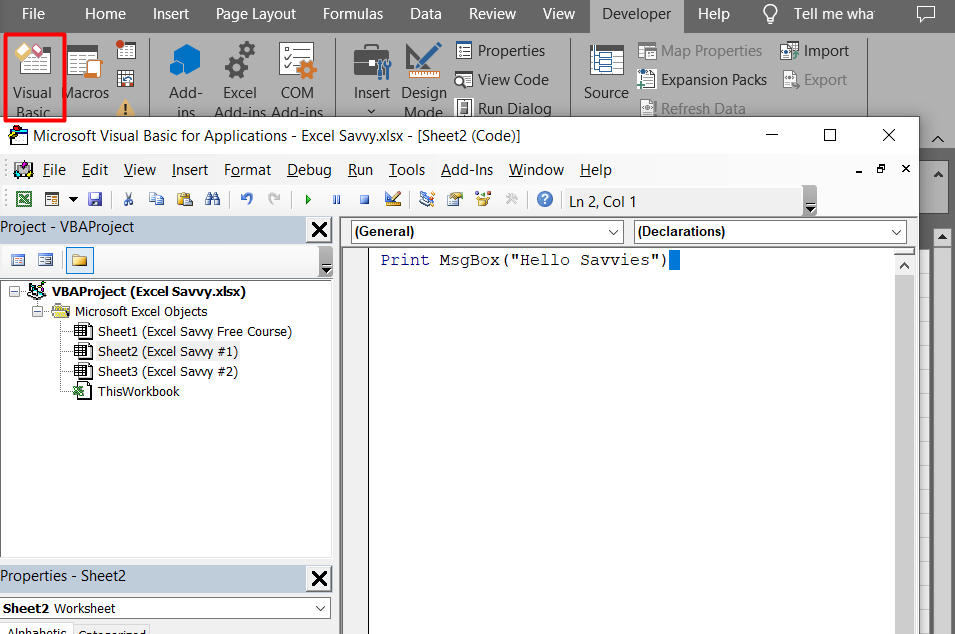
- Save and close the Visual Basic Editor.
Custom functions and formulas provide an immense capability to handle specialized calculations and automate repetitive processes, empowering you to become more efficient and effective in your data analysis.
Building User Interfaces with UserForms
UserForms are custom dialog boxes that allow you to create intuitive and interactive interfaces directly within Excel. UserForms enable you to enhance the user experience and streamline data entry, making complex tasks more manageable for end-users.
To build a UserForm, follow these steps:
- Activate the “Developer” tab in the Excel ribbon.
- Click on the “Insert” button to add a new UserForm.
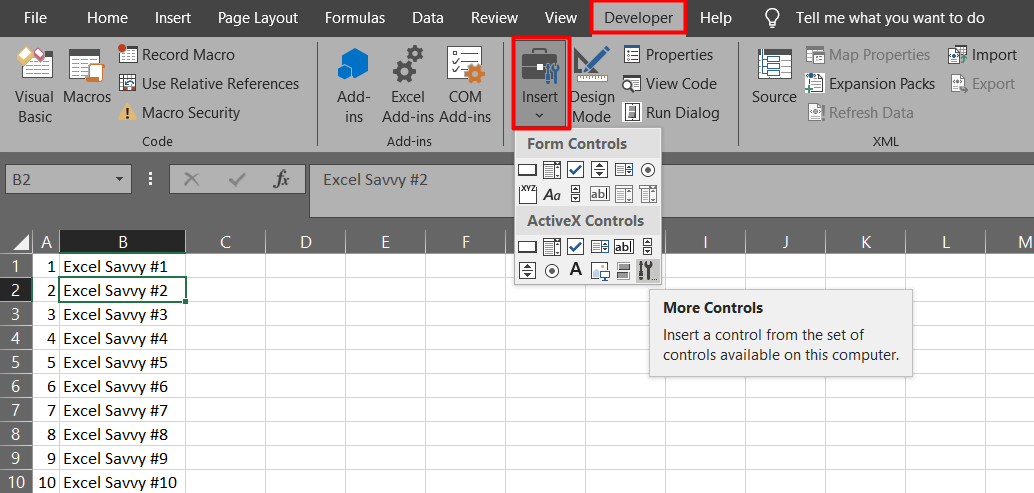
- Design the UserForm by adding controls such as buttons, text boxes, drop-down lists, and checkboxes.
- Utilize VBA programming to add the necessary functionality to the form’s controls.
- Test and refine the UserForm to ensure a smooth user experience.
UserForms add a professional touch to your Excel workbooks. They allow you to create interactive forms, dashboards, data entry screens, and more. By providing intuitive interfaces, UserForms enhance usability and efficiency.
Customizing Charts and Graphs
Excel’s charting capabilities are extensive, allowing you to create impactful visualizations to present and analyze your data. Customizing charts and graphs can elevate the clarity and impact of the information you convey.
To customize charts and graphs in Excel:
- Select the chart or graph you want to customize.
- Use the “Chart Design” “Chart Layouts” and “Chart Styles” tabs in the ribbon to modify the appearance of the chart.
- Experiment with different chart types, labels, titles, axes, and other formatting options to improve visual clarity.
- Consider adding data labels, data bars, or trendlines to enhance data interpretation.
- Ensure that the colors and styles you choose are consistent with your overall design concept.
| Chart Type | Best Use Case |
|---|---|
| Column Chart | Comparing data across categories |
| Line Chart | Showing trends over time |
| Bar Chart | Comparing data among different categories |
| Pie Chart | Displaying proportional data |
| Scatter Plot Chart | Analyzing relationships between variables |
| Area Chart | Illustrating cumulative change over time |
Customizing charts and graphs in Excel allows you to create engaging visual representations of your data. By choosing the right chart types and applying effective formatting, you can highlight trends, patterns and outliers, making your data more understandable and compelling.
Power Query and Power Pivot Customizations
Power Query and Power Pivot are advanced features in Excel that offer unmatched capabilities for data transformation, consolidation, and analysis. These features allow you to work with large datasets and establish relationships between different data sources.
Power Query
Power Query is a data connectivity and transformation tool in Excel, that allows you to import, clean, and shape data from various sources. With Power Query, you can perform complex transformations, merge datasets, filter and sort data, and remove duplicates.
Power Pivot
Power Pivot is a data modeling tool that allows you to create advanced data relationships and calculations within Excel. It enables you to work with large datasets, create custom calculations using Data Analysis Expressions (DAX), and build robust data models for complex analysis.
Brief comparison :
| Features | Power Query | Power Pivot |
|---|---|---|
| Data Extraction | Import and transform data from various sources | Import and manage large datasets |
| Data Cleaning | Remove duplicates, split columns, perform calculations | Merge tables, create relationships |
| Data Transformation | Pivot, unpivot, merge, and append queries | Create advanced formulas using DAX |
| Query Editor | Intuitive interface for shaping and transforming data | N/A |
| User Interface | Interactive, visual interface for data transformations | N/A |
Using Power Query and Power Pivot together, you can perform advanced data transformations, create flexible and interactive data models, and gain deep insights into your data like never before.
Conclusion
Customizing Excel to fit your unique needs and preferences is the key to becoming Excel Savvy. By adding frequently used commands to the Ribbon, mastering keyboard shortcuts and macros, employing conditional formatting and data validation, utilizing templates and themes, personalizing settings and preferences, exploring advanced customizations, and leveraging the power of Power Query and Power Pivot, you can optimize your workflow, save time, and achieve more with Excel.
Remember, Excel Savvy is a journey of continuous learning and exploration. As you delve deeper into Excel and its customizations, you’ll unlock new possibilities and streamline your data analysis processes. Embrace the full potential of Excel customizations, and excel in your professional and personal endeavors. Until next time, Stay Savvy
| Previous | Home | Next |
|---|---|---|
| Excel Savvy #1 | Excel Savvy Home | Excel Savvy #3 |

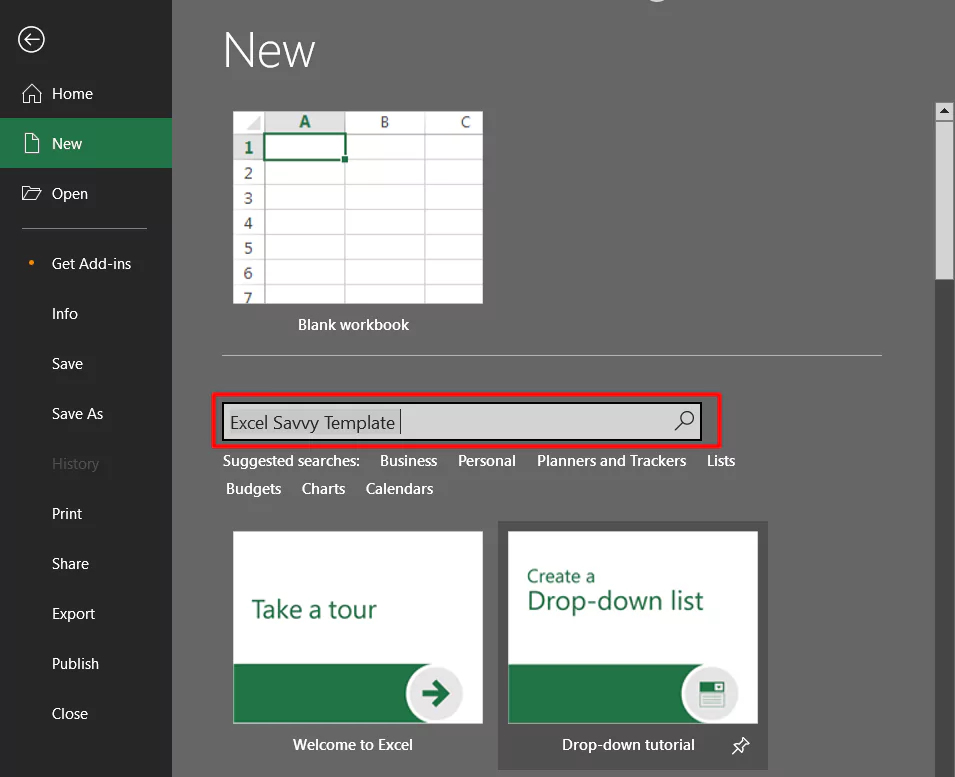

Comments are closed.